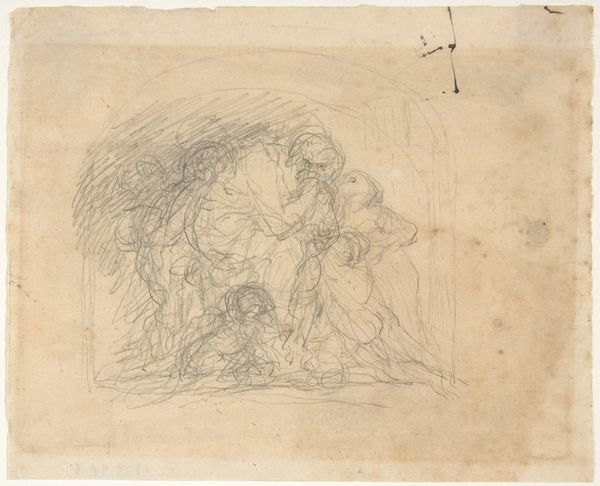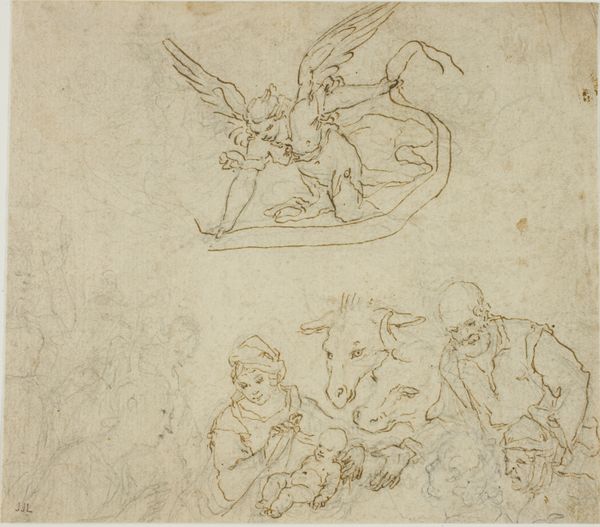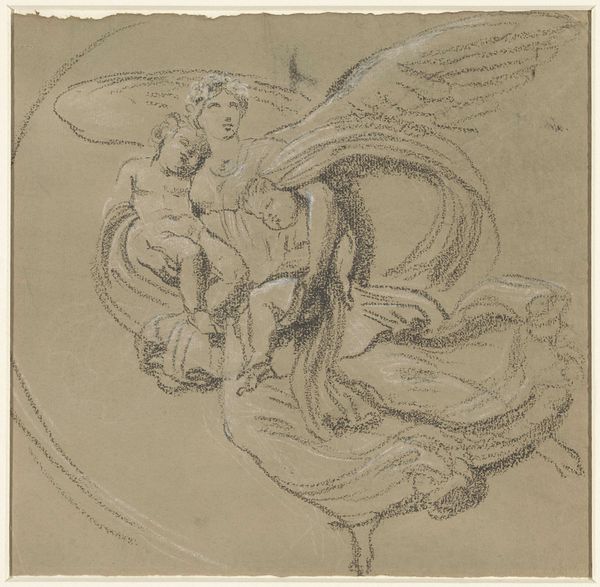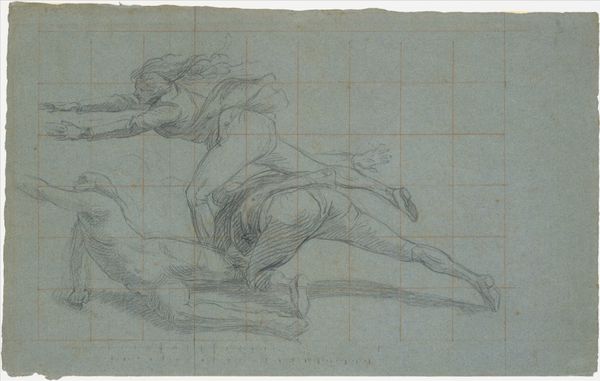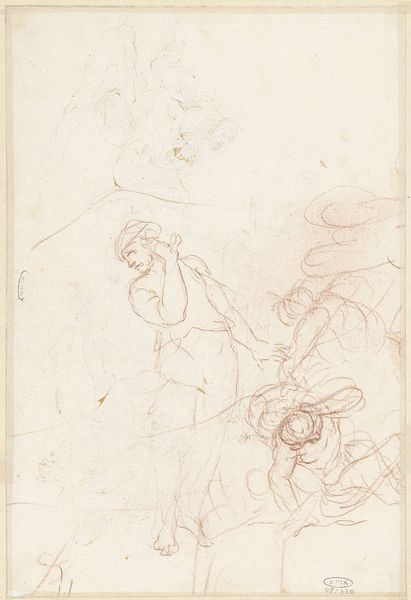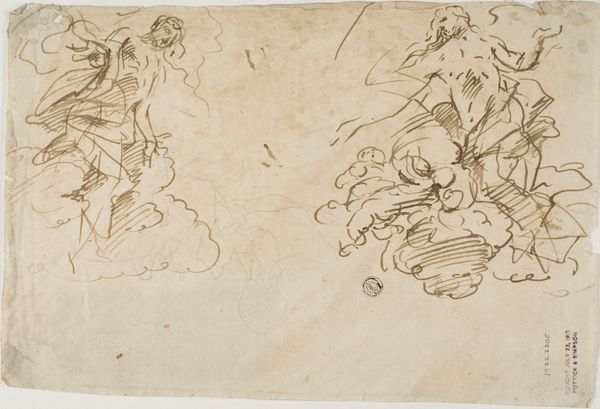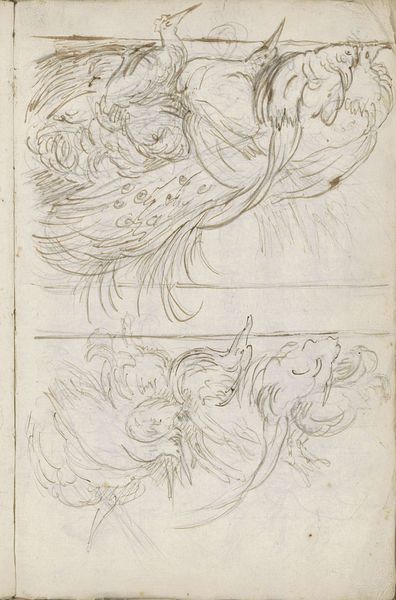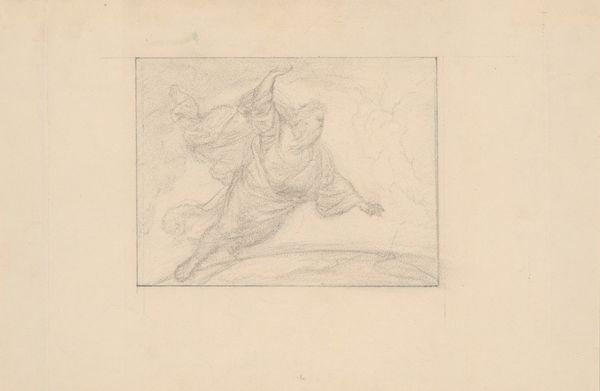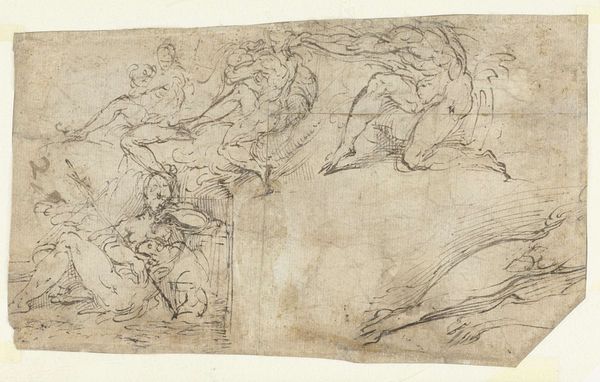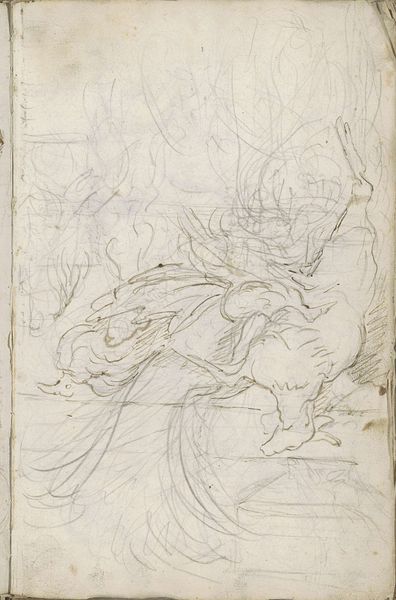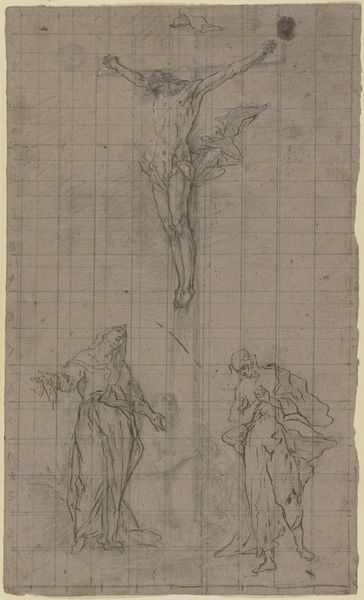
drawing, pencil
#
drawing
#
baroque
#
figuration
#
pencil
#
academic-art
#
angel
Dimensions: 9 x 11 3/8 in. (22.8 x 28.9 cm)
Copyright: Public Domain
Curator: This pencil drawing offers us a glimpse into the working methods of Pierre Mignard. It’s a study, dating sometime between 1620 and 1695, for his fresco at the Val de Grâce. He titled it "Two Angels." What do you make of it? Editor: The initial feeling is… fleeting. A quiet sense of grace in the midst of what seems like a very technical process. I'm drawn to the grid – it speaks of preparation, of methodical transfer and scaling, the nuts and bolts of large-scale Baroque composition. Curator: Exactly. Look at how the angels are sketched; wisps of movement captured within the confines of that grid. It makes me think of a musician practicing scales – the technical grounding that allows for inspired improvisation later. Editor: That tension is what holds my gaze. We’re invited to consider labor, artistic labor—not the end product, but the means through which the grandeur of a finished fresco is made real. Was the paper accessible? What kind of pencil was used? How were his assistants involved in realizing this work? Curator: That grounded, material perspective is invaluable. I tend to drift towards the emotional resonance: the subtle tilting of their heads, the tender gestures that hint at the comfort and solace inherent in divine presence. Editor: Sure, but where do these ideas of tenderness and solace originate? Who produced and circulated them, and in what context? Was this comfort available for everyone, or just a small section of society that supported this artist in 17th century France? Curator: Perhaps it is found in Mignard's mastery in depicting ethereal subjects. We see in those faint pencil strokes his belief in their transcendent beauty. Editor: Or perhaps we are simply inheriting long standing traditions that obscure what's really important when we discuss the history of art. The stories of laborers are more scarce than stories about artists, who enjoyed more benefits and privileges in their time. Curator: Perhaps both are important lenses, helping us to explore not only the artistry but also the tangible and often overlooked aspects that surround its creation. Editor: Precisely. These works are part of a system of creation. By understanding their means, maybe we come to a richer appreciation of artistic enterprise throughout history.
Comments
No comments
Be the first to comment and join the conversation on the ultimate creative platform.
